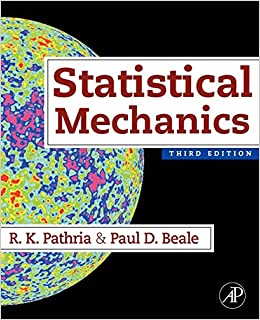The excitation energy of liquid (mathrm{He}^{4}), carrying a single excitation above the ground state, is determined by
Question:
The excitation energy of liquid \(\mathrm{He}^{4}\), carrying a single excitation above the ground state, is determined by the minimum value of the quantity
\[
\varepsilon=\int \Psi^{*}\left\{-\frac{\hbar^{2}}{2 m} \sum_{i} abla_{i}^{2}+V-E_{0}ight\} \Psi d^{3 N} r / \int \Psi^{*} \Psi d^{3 N} r
\]
where \(E_{0}\) denotes the ground-state energy of the liquid while \(\Psi\), according to Feynman, is given by equation (11.4.3). Show that the process of minimization of this expression leads to equation (11.4.5) for the energy of the excitation.
[First express \(\varepsilon\) in the form
\[
\varepsilon=\frac{\hbar^{2}}{2 m} \int|abla f(\boldsymbol{r})|^{2} d^{3} r / \int f^{*}\left(\boldsymbol{r}_{1}ight) f\left(\boldsymbol{r}_{2}ight) g\left(\boldsymbol{r}_{2}-\boldsymbol{r}_{1}ight) d^{3} r_{1} d^{3} r_{2}
\]
Then show that \(\varepsilon\) is minimum when \(f(\boldsymbol{r})\) is of the form (11.4.4).]
Step by Step Answer:






